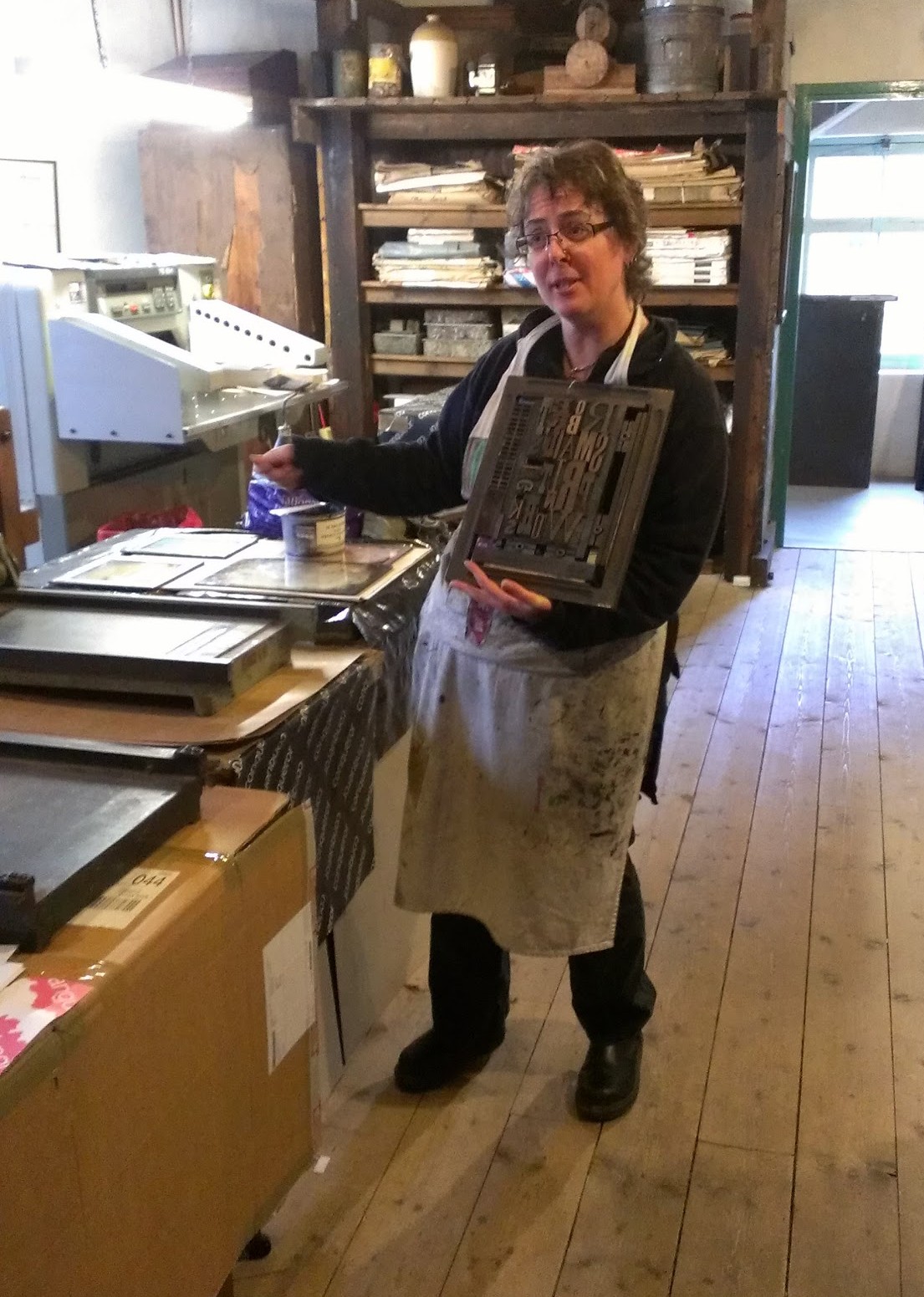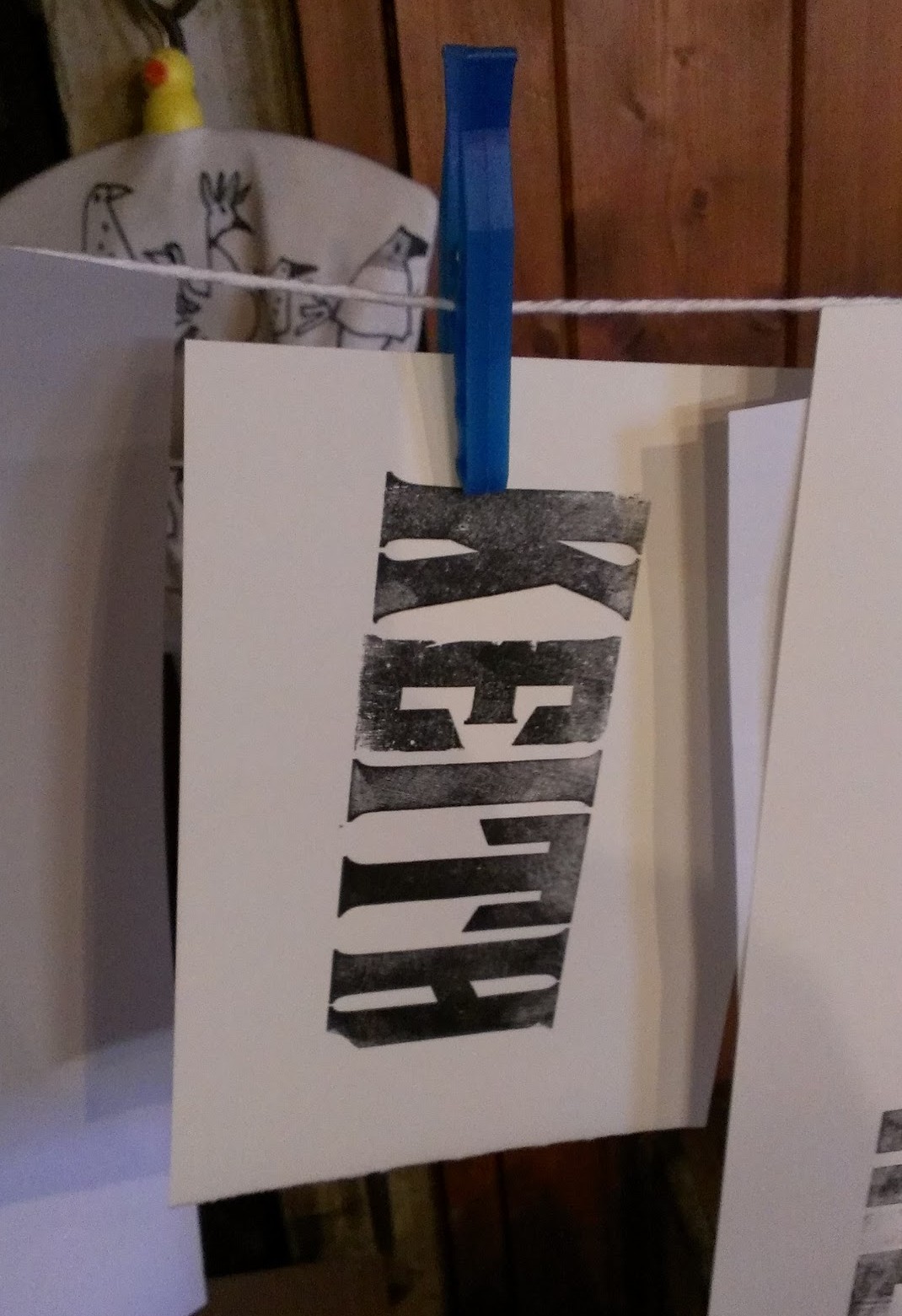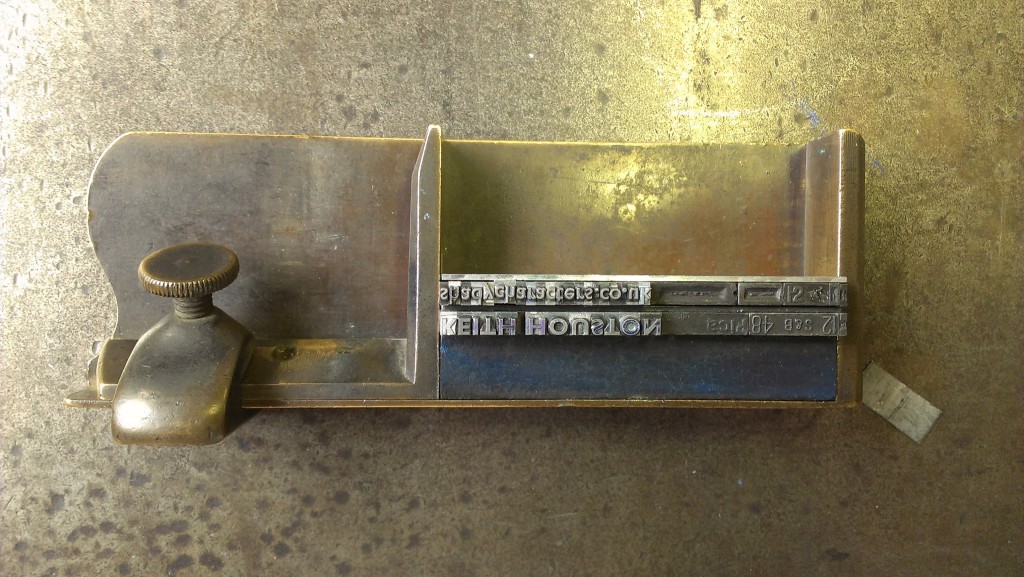Last weekend I took the bus from Edinburgh to Innerleithen, a small town in the Scottish Borders, for a one-day letterpress workshop at Smail’s Printing Works. The more I appreciate the impact that printing has had on the marks examined here, the more I want to try my hand at printing itself: it seems disingenuous to discuss the death of the pilcrow at the hands of Gutenberg’s press, or to explore the epic struggle to automatically hyphenate and justify text, without ever having lifted a piece of type in anger.
So, just before 10am on a damp but clear Saturday morning, I stepped off the bus on Innerleithen’s high street and walked the few hundred metres to the Victorian shop front of R. Smail & Sons Printing Works. Gen Harrison, property manager, and Rachel Mays, senior assistant, greeted the handful of us who had managed to snag places on the second of the two workshops run each year. We were shepherded from the neat, quaint shop to the separate, two-storey workshop building behind, given aprons and warned to keep our hands out of whirring machinery.

The workshop is a warmly inviting, thoroughly lived-in piece of Victorian architecture. It is poised over a manmade canal, with the small water wheel that powered the works’ presses in their heyday visible through the windows at one gable end. The ground floor was taken up with a variety of hand and powered presses, with cabinets of type and shelves laden with reams of paper crowding the walls. To get us over the inevitable what-do-I-print-and-how-do-I-print-it hump, Gen led us through the basics of printing with the large, wooden type once used to set posters and other display items, and encouraged us to start by printing our own names.
The process is as easy to describe as it is difficult to get right. First, the wooden blocks of type are placed face up on the bed of the press, then the viscous, sticky ink is rolled out and applied to the faces of the letters with a small hand roller. Next, the paper is laid flat over the letters and the press’s cylindrical platen is rolled over and back across the paper. Carefully peel off the paper et voilà: you have a squint, patchy reproduction of your name in a style beloved of the makers of distressed denim clothing. Gen and Rachel helped us through the various tricks to getting things right: even application of ink, the use of magnets and wooden guides (or “furniture”) to keep the type square on the bed of the press, and judicious use of scrap paper placed under the type to level out the uneven surfaces of the letters.

Rather than perfect my wooden type technique, though, I had a different goal in mind. I explained to Gen what I wanted to do and was shown upstairs to the second storey of the workshop. The second floor was again packed with presses and cabinets of type; this time, though, the angled cases set out at eye and waist height held the minuscule lead type used to set books.
The process of setting lead type is a little more involved than for wooden type. First, a ‘composing stick’, or ‘setting stick’, resembling a brass ruler or caliper, is set to the desired line width. Individual sorts — lead blocks carrying embossed letters — are placed upside down and left to right along the composing stick’s ledge until the line is full, or nearly full; any play is eliminated by distributing progressively thinner spaces between the words. Next, if the printed lines are to be separated by some white space, a thin lead strip is placed along the top (or bottom, depending on your point of view) of the finished line, and a new line begun. Once the stick is full, the letters are carefully slid off into a metal ‘chase’, or frame; empty space around the text is filled with furniture and everything is held in place by means of expandable spacers called ‘quoins’. The finished article — furniture, quoins and type bound into a chase — is called the ‘forme’. (Inevitably, your first completed forme will shed letters and spaces willy-nilly onto the workbench as soon as you lift it up. There is an art to spacing lines so that they do not do this.)

Unlike the large roller presses downstairs, this time round I would be using a dainty “Adana”, the quintessential hobbyist printing press, and a British institution from its introduction in the 1920s until the last new example was sold in the ’90s. The Adana is an ingenious device: a single lever drives a pair of rollers across the surface of the type and up over the circular inking plate to receive a fresh coat of ink; after the rollers have passed, the platen bearing the paper is pressed against the type. As the lever is released, the platen is withdrawn from the type and the rollers return to rest at the bottom of the machine. (It’s difficult to describe; this video shows a similar Kelsey press in action.)
My plan called for four or five formes in total, and two separate impressions for each printed piece, each with a different colour of ink. With Gen having demonstrated the subtleties involved in aligning, or ‘registering’, the successive formes required to print each piece, I set to work. The printing itself went remarkably smoothly — so smoothly, in fact, that I almost immediately felt the siren call to purchase a used Adana — though cleaning the stubbornly adhesive ink off the rollers and inking plate was enough to bring me back down to earth. Distributing type back into the correct boxes at the end of the day was another shock to the system, and I suddenly understood at an instinctive level why Ottmar Mergenthaler and Tolbert Lanston had sunk so much of their time and money into their respective automated typesetting devices. A lifetime of distributing used type must have driven even the most patient of hand compositors a little mad.

In the end, my 6-hour day resulted in a stack of perhaps fifty two-colour business cards. It seems paltry to type that, but I can’t express how satisfying the process was; Eric Gill may have been a monstrous character in his private life, but his public endorsement of skilled manual work was spot on. Gen and Rachel’s enthusiasm for their job was infectious, and by the end of the day I was thoroughly pleased with my small achievement. If you’ve ever been the slightest bit curious about printing or typopgraphy, you owe it to yourself to give it a try, and Smail’s is the perfect place to start.
Responsibility for all photographs (however inexpert) is mine. See more at my Google+ profile. Neither the NTS nor Smail’s induced me to write this in any way; I enjoyed myself so much that I thought it worth spreading the word. Do get in touch with them if you fancy trying letterpress printing!
Comment posted by Andrew Areoff on
Lovely simple, hand produced letterpress business cards. What more could you want to make a decent first impression when you hand out your card to people? I love letterpress and only have a little Adana price but it’s great for producing cards, swing tags, invites and basic greetings cards. Keeping it simple really is cool.
I want to add you on Google+ but the link above is dead.
Comment posted by Keith Houston on
Hi Andrew — thanks for catching the broken link! It should now be fixed.
Having just printed about 150 wedding invitations on an inkjet printer (and despite how well they turned out!), I’d have loved to do them with an Adana or Kelsey.
Comment posted by Graham Moss on
As a somewhat older stonehand myself, and still enjoying the craft everyday, it’s a great pleasure to read how you got an understanding of what is behind what the unknowing think of as daily grind. I almost wish I still had the energy to take students! Thank you.
Comment posted by Keith Houston on
Hi Graham — I’m glad you enjoyed the article! It really was a fantastic introduction to letterpress printing in its most elemental form. It must make for a rewarding career indeed.
Comment posted by Adam Rice on
For whatever it’s worth, what you call a “forme” is also called a “lockup”—at least on this side of the pond. Here’s an impressive example (more and more)
Comment posted by Keith Houston on
Hi Adam — thanks for the comment. I did confuse ‘chase’ and ‘forme’ at first, but I was happy to be educated at the workshop. And I am very impressed indeed by your extreme lockup examples! (Sounds like a niche sport in the making.)
Comment posted by phil on
I got an Adana in my garage looking for a home, it will require rollers ……..